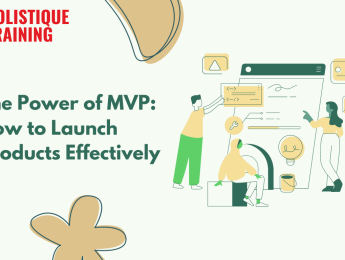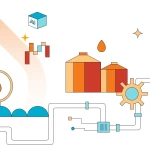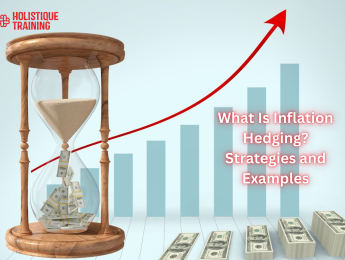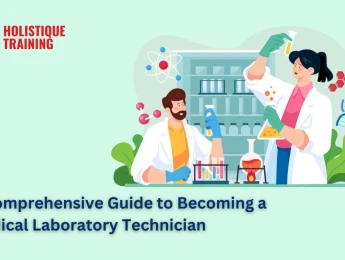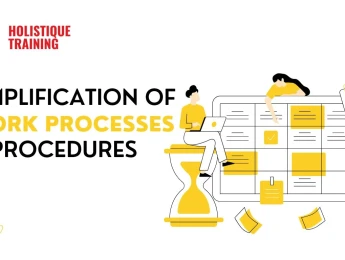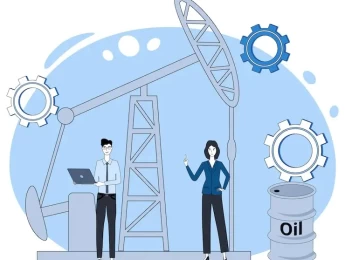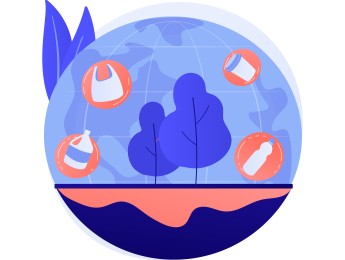Introduction
The concept of a Minimum Viable Product (MVP) is a cornerstone of modern product development, offering a strategic approach to bringing new products to market with minimal resources while maximizing learning. An MVP involves creating a basic version of a product that includes only the essential features needed to solve a core problem, allowing companies to test their ideas, gather customer feedback, and make informed decisions about future development. This method is crucial in reducing risks, saving costs, and ensuring that the final product aligns with market demands, making it a vital tool for startups and established businesses alike.
Definition of MVP
A Minimum Viable Product (MVP) is a development technique popularized by the Lean Startup methodology, which involves creating the most basic version of a product that can still deliver value to its users. The primary purpose of an MVP is to test a business idea with minimal resources, allowing companies to gather validated learning about customers' needs and preferences before investing in a full-scale product development. An MVP typically contains only the core features that address the fundamental problem the product aims to solve, without any additional bells and whistles that might complicate or delay the launch. This lean approach helps to minimize the risks associated with product development by ensuring that only the essential aspects are tested and refined based on real user feedback.
Key Characteristics of an MVP:
- Minimal Feature Set: Focuses on the essential features that solve the core problem for the target audience.
- User-Centric Design: Built to engage users and provide them with immediate value, even in its simplest form.
- Scalable Foundation: Designed with the potential for future growth and the addition of more features based on user feedback.
- Rapid Development and Testing: Emphasizes speed and efficiency in bringing the product to market for early testing.
- Iterative Improvement: Continuously refined based on feedback and data collected from users during initial interactions.
The Purpose of an MVP
The purpose of a Minimum Viable Product (MVP) is to serve as a strategic tool in product development, allowing companies to validate their ideas, reduce development costs, and gather valuable customer feedback at an early stage. By focusing on creating a basic version of the product that includes only the core features necessary to solve a key problem, businesses can quickly test the market’s response to their idea without committing to a full-scale development. This approach helps to ensure that the product concept is viable before significant time and resources are invested, thus minimizing the risk of failure.
Key Purposes of an MVP:
- Validating Product Ideas: An MVP enables companies to test whether their product idea resonates with the target audience. By launching a product with just the essential features, businesses can observe how users interact with it, thereby validating or refining the initial concept based on real-world data rather than assumptions.
- Reducing Development Costs and Time: Developing an MVP requires fewer resources, as it avoids the costly and time-consuming process of building a fully-featured product. This lean approach allows businesses to bring their product to market more quickly, saving both time and money by focusing only on what’s necessary for initial testing and feedback.
- Gathering Customer Feedback Early: One of the most critical aspects of an MVP is the opportunity it provides to gather customer feedback right from the start. Early user interaction with the MVP helps to identify which features are most valuable, what might need improvement, and whether the product is meeting customer needs. This feedback loop is essential for guiding future development and ensuring the product evolves in a way that aligns with user expectations.
Benefits of Using an MVP
Using a Minimum Viable Product (MVP) offers numerous benefits that can significantly impact the success of a product and the overall strategy of a business. One of the most notable advantages is the faster time-to-market that an MVP allows. By focusing on developing only the core features necessary to solve a key problem, companies can launch their product more quickly, gaining a competitive edge by entering the market ahead of others who may still be in the full development phase. This rapid deployment not only enables faster customer engagement but also allows businesses to start generating revenue earlier in the product’s lifecycle.
Key Benefits of Using an MVP:
- Cost Efficiency: Developing an MVP is a cost-effective strategy because it requires fewer resources—both in terms of time and money—compared to building a fully-featured product from the outset. By concentrating on essential functionalities, companies can avoid the expenses associated with creating features that may not be needed or valued by customers. This lean approach ensures that funds are allocated more effectively and reduces the financial risk of investing in a product that may not succeed.
- Risk Mitigation: An MVP significantly mitigates the risks involved in product development. By testing the market with a simplified version of the product, companies can validate their assumptions and make informed decisions based on real customer feedback. This approach helps to avoid the potential failure of a fully developed product that might not meet market demands, allowing for adjustments or pivots early in the process before substantial resources are committed.
- Better Understanding of Customer Needs: Launching an MVP provides businesses with invaluable insights into customer behavior and preferences. Early interactions with the product reveal which features are most important to users and highlight areas for improvement. This direct feedback allows companies to refine their product to better meet customer needs, ensuring that the final version is more aligned with market demands and has a higher chance of success. This customer-centric approach not only enhances the product but also builds stronger relationships with users by demonstrating a commitment to meeting their needs.
Challenges and Risks of MVP
While a Minimum Viable Product (MVP) offers significant advantages, it also comes with certain challenges and risks that need to be carefully managed to ensure success. One of the primary challenges is balancing quality and speed. The essence of an MVP is to launch quickly with a basic set of features, but this can sometimes lead to compromises in quality. Rushing to market might result in a product that is not polished or robust enough, which can negatively impact user experience and damage the brand’s reputation. Striking the right balance between speed and quality is crucial to ensure that the MVP still delivers value and reliability, even in its simplest form.
Challenges and Risks of an MVP:
- Misinterpreting Market Feedback: An MVP is designed to gather early customer feedback, but interpreting this feedback correctly can be challenging. Early users might be unrepresentative of the broader target market, leading to skewed insights. Additionally, the limited features of an MVP might cause users to focus on the missing elements rather than providing useful feedback on the core functionalities. This can result in misleading conclusions about the product’s viability or the need for certain features, ultimately affecting the direction of future development.
- Potential for Miscommunication with Stakeholders: An MVP often requires careful communication with stakeholders to set the right expectations. Because an MVP is a stripped-down version of the final product, stakeholders might misunderstand its purpose and view it as a reflection of the final product's quality or scope. This can lead to dissatisfaction or lack of confidence in the product’s potential. Clear communication about the goals, limitations, and iterative nature of an MVP is essential to manage stakeholder expectations and ensure their continued support throughout the development process.
By being aware of these challenges and proactively addressing them, companies can leverage the benefits of an MVP while minimizing the associated risks.
Examples of successful MVPs
Examples of successful Minimum Viable Products (MVPs) from well-known companies demonstrate the power of starting small and iterating based on real user feedback. These examples highlight how even the most influential brands began with a basic version of their product to test the market before expanding.
One of the most famous successful MVPs is Dropbox. Initially, Dropbox didn’t build a fully functional product but instead created a simple explainer video to illustrate the concept of cloud-based file storage. The video generated substantial interest and sign-ups, validating the demand for the product before significant resources were invested in development. This approach allowed Dropbox to refine its offering based on early user feedback and ultimately build a product that millions of users rely on today.
Another iconic example is Airbnb, which started as a basic website offering short-term lodging in the founders’ apartment. The MVP tested the idea that people would be willing to rent out their homes to strangers. When the concept gained traction, Airbnb gradually expanded its platform, adding more features and scaling the business to become a global phenomenon in the hospitality industry.
Case Studies of MVPs in Different Industries further illustrate the versatility of the MVP approach. In the automotive industry, Tesla's Roadster served as an MVP for the company’s electric vehicle technology. The Roadster was a high-end, low-volume product that allowed Tesla to validate its electric powertrain technology and gather insights before scaling production to more affordable models like the Model S and Model 3.
In the software industry, Buffer, a social media management tool, started with a simple landing page to gauge interest in the product. Visitors could sign up to learn more, and if they expressed interest, they were directed to a pricing page. This MVP allowed Buffer’s founder to validate the idea and gather a waiting list of potential customers before building the actual product.
These examples and case studies underscore the effectiveness of using an MVP to test assumptions, gather user feedback, and gradually build a successful product based on real market demand. The MVP approach is not limited to tech startups but is applicable across various industries, proving its value as a strategic tool in product development.
Common Myths about MVP
There are several common myths surrounding the concept of a Minimum Viable Product (MVP) that can lead to misunderstandings and misapplications of the approach. One of the most prevalent myths is the misconception about the simplicity of an MVP. Many people mistakenly believe that an MVP is merely a rudimentary or underdeveloped product, which is far from the truth. An MVP is not just a hastily assembled prototype; it is a carefully crafted product designed to deliver core value with the minimum features necessary to solve a specific problem. While an MVP may appear simple on the surface, it requires strategic thinking to identify which features are essential for validating the product idea. This misconception can lead to the development of a product that lacks the necessary focus and fails to effectively test the market hypothesis.
Common Myths about MVP:
- Misconceptions about MVP's Simplicity: The idea that an MVP is inherently simplistic often leads to the belief that it is easy to create. In reality, designing a successful MVP requires a deep understanding of the target market, the problem being solved, and the core features that will provide value to users. The challenge lies in striking the right balance between simplicity and functionality, ensuring that the product is both viable and capable of delivering meaningful insights. An MVP should be seen as a strategic tool that demands careful planning and execution, rather than a quick, low-effort solution.
- The Myth of MVP as a "Cheap" Product: Another common myth is that an MVP is synonymous with a "cheap" or low-quality product. This misunderstanding can lead to the development of a product that is underfunded or lacks the necessary quality to engage users effectively. While it is true that an MVP is designed to minimize costs by focusing on essential features, this does not mean it should be cheaply made. The goal of an MVP is to create a functional, valuable product that users can interact with and provide feedback on. Cutting corners on quality can lead to negative user experiences, which may result in poor feedback and ultimately hinder the product's success. An MVP should be cost-efficient, but it should not sacrifice the quality needed to test the market effectively.
By understanding these myths and recognizing the true nature of an MVP, businesses can better utilize this approach to develop products that are both strategically sound and well-received by their target audience.
The Future of MVP
The future of Minimum Viable Product (MVP) development is set to evolve with emerging trends and technological advancements that will further refine the process and enhance its effectiveness. One of the key trends in MVP development is the increasing emphasis on customer-centric design and iterative testing. As businesses continue to prioritize user experience, MVPs will likely become even more focused on delivering immediate value to customers, with a greater reliance on data-driven insights to guide feature selection and prioritization. Additionally, the rise of agile methodologies and lean startup practices will continue to shape the MVP approach, encouraging faster iteration cycles and more frequent releases to gather real-time feedback and make swift adjustments.
The Future of MVP:
- Trends in MVP Development: The MVP approach is expected to become more collaborative, with cross-functional teams playing a larger role in the development process. This collaboration will be supported by advanced tools that enable seamless communication and integration between different aspects of product development, from design and engineering to marketing and customer support. Another emerging trend is the use of microservices and modular design in MVPs, allowing for greater flexibility and scalability. By building products in a modular way, companies can easily add, remove, or update features based on user feedback without overhauling the entire system, making the MVP more adaptable to changing market needs.
- The Role of AI and Automation in MVP Creation: Artificial intelligence (AI) and automation are poised to revolutionize MVP development by streamlining processes and enhancing decision-making. AI-driven tools can help identify the most valuable features to include in an MVP by analyzing vast amounts of data and predicting user behavior. Machine learning algorithms can also be used to personalize the MVP experience for different user segments, ensuring that the product resonates with its intended audience. Automation, on the other hand, can speed up the development process by automating repetitive tasks such as testing, deployment, and monitoring. This allows teams to focus more on creativity and innovation, rather than getting bogged down by manual processes. Additionally, AI-powered analytics can provide deeper insights into user interactions with the MVP, enabling more informed decisions on feature development and prioritization.
As these trends and technologies continue to evolve, the MVP approach will become even more powerful, enabling businesses to create products that are not only viable but also highly responsive to market demands. The future of MVPs will likely involve a blend of human creativity and AI-driven efficiency, resulting in more innovative, customer-focused products that can adapt quickly to changing market conditions.
Summary Table: The Future of MVP Development
Aspect | Details |
Trends in MVP Development | - Increased emphasis on customer-centric design and iterative testing. - Focus on delivering immediate value to customers. - Reliance on data-driven insights for feature selection. |
Agile and Lean Practices | - Adoption of agile methodologies and lean startup practices. - Encouragement of faster iteration cycles and more frequent releases. |
Collaboration and Integration | - More collaborative approach with cross-functional teams. - Use of advanced tools for seamless communication and integration across product development aspects. |
Modular Design and Microservices | - Implementation of microservices and modular design for flexibility and scalability. - Easier updates and feature adjustments based on user feedback. |
Role of AI and Automation | - AI for identifying valuable features and predicting user behavior. - Machine learning for personalizing MVP experience. - Automation to streamline testing, deployment, and monitoring. |
Impact of AI and Automation | - Enhanced decision-making and deeper insights into user interactions. - Focus on creativity and innovation by reducing manual processes. |
Overall Future Outlook | - MVPs will become more powerful and responsive to market demands. - Blend of human creativity and AI-driven efficiency for innovative, customer-focused products. |
Conclusion
In conclusion, the Minimum Viable Product (MVP) plays a pivotal role in modern product development, enabling companies to test and validate their ideas with minimal investment while gathering essential customer feedback. By focusing on core functionalities, an MVP allows businesses to enter the market quickly, reduce risks, and refine their products based on real-world insights. Successfully implementing an MVP requires careful planning, a clear understanding of customer needs, and a commitment to iterative improvement. When done right, an MVP can be the foundation for creating a product that not only meets market demands but also evolves effectively with changing user expectations.


